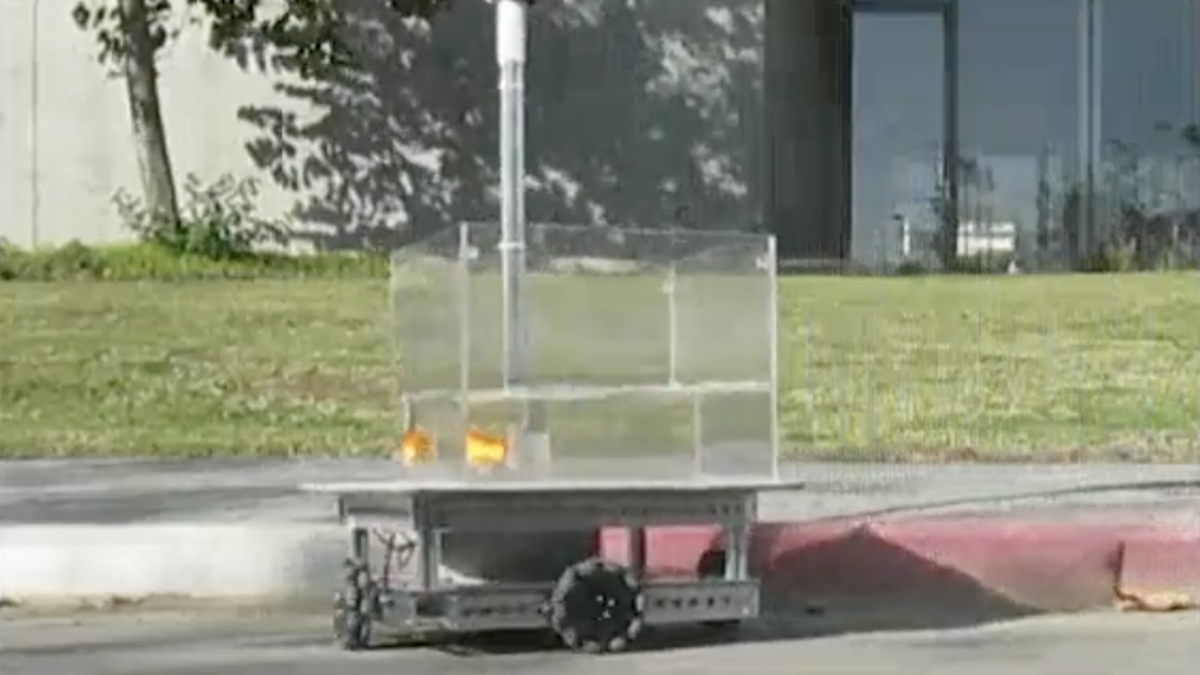
Getting goldfish to drive a vehicle on dry land seems a bit extra, but there is a method to this madness. Shachar Givon and Matan Samina from Ben-Gurion University of the Negev in Israel wanted to test the navigation skills of goldfish outside their usual habitat, which could shed new light on the origin of navigation skills in general.
The scientists wanted to test the "domain transfer methodology," in which one species is embedded in another species and must cope with an otherwise familiar task, in this case navigating through a terrestrial environment as opposed to an aquatic environment.
Vehicles guided by rats and dogs are some of the things that have been done in the past. A fish-driven car has already been created, but that was an observational report, not a scientific study, and did not include a methodological examination of navigation capacities.
The team designed and built a Fish Operated Vehicle, or FOV, for the experiment because we now need an acronym to describe such things. The goldfish car consists of a water tank, four motorized wheels, a computer, a camera to track movement, and LIDAR to identify the vehicle's location. The fish moved at a rate of just over one mile per hour.
According to the study, the vehicle was designed to detect the fish position in the water tank and react by moving in a specific direction. The fish were able to drive the vehicle in the environment because of the vehicle's reaction to the fish's position. The FOV stopped moving if the fish was facing inward and swimming near the wall of the water tank.
The goldfish were used in the experiment. Each session lasted for 30 minutes, with a maximum of 20 trials to avoid overfeeding. The fish received a food pellet reward after they learned to navigate their FOV to a pink target.
Over time, the fish got better at the task and received more rewards. The starting location of the arena and the location of the pink target were changed by the researchers to make the task more difficult. They added decoy targets with green, blue, and orange colors. The goldfish brushed the added problems aside.
The study suggests that fish can learn to control a vehicle and use simple navigation strategies to perform a task. The scientists claim that the new findings suggest that the way space is represented in the fish brain and the strategies it uses may be as successful in a terrestrial environment as they are in an aquatic one. Future research should test this methodology on a terrestrial animal in an aquatic environment to reach more conclusive conclusions, they say.
The experiment is interesting and fun, but it is not clear to me if the fish knew they were operating a vehicle or not. The fish were swimming towards a target, which led to the reward. The scientists admit that the FOV could be used to study fish motor adaptation, since the computerized control system can be modified to include a constant distortion in the mapping between fish behavior and vehicle response. In other words, the FOV could be designed so that the fish would have to do things that are not fishy in order to drive the vehicle towards the target. That would be a strong sign that fish can adapt their navigation skills to new environments.
Rats and dogs have been shown to be capable of driving vehicles, but a fascinating experiment from last year took this concept to another level. The hybrid robot-plant moved toward a light source after the plant triggered its actions.
